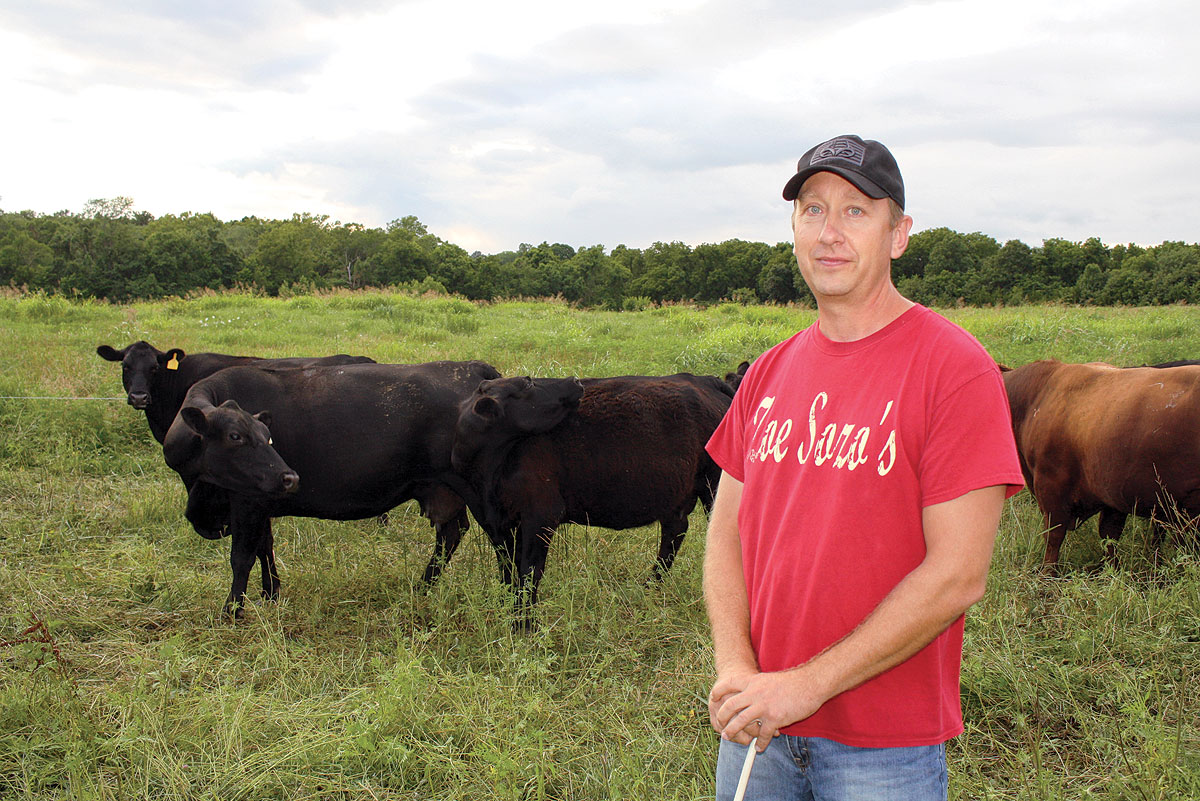
Brad and Joanna Carter’s registered Angus and Boer Goats may be a small-time operation, but that doesn’t stop them from taking specific steps towards improving their breeding programs.
“We AI our cattle, but we’re not brave enough to AI our goats,” Joanna laughed. The Carters have had goats for five years, and cattle for longer than that. When they moved to their current location, in Dadeville, Mo., Brad said their fields were covered with serecia lespedeza. “The cattle wouldn’t eat it, that and all our brush. So we got goats to take care of it,” he recalled.
Then they decided to go registered so their kids could show. Their two girls, Erin, a senior, and Emily, a sophomore, both at Dadeville High School, started out showing the cows, then switched to the goats.
Size and Scope
The Carters have around 30 goats, counting babies and all, and they sell mostly through private treaty.
“The first time we did a market sale, we took five whethers, and we were proud because we had the highest selling whethers in the sale at Sedalia. We were really happy people wanted our whethers,” Joanna said.
When selecting for breeding stock, Brad said they look for good, straight bucks with a lot of meat on them, that move well. Joanna added to this, saying, “We go along with the breed characteristics. We want them to have sound feet and legs. Also, we want them to look good year-round.”
Brad added that they try to achieve the balance between easy-keeping and keeping them looking good. And they also are quick to rid themselves of problem animals, needing problem-free stock, since they both work off the farm – Brad is the music teacher at Dadeville, and Joanna teaches Kindergarten there.
But, Joanna admitted, she finds it hard to cull even the less-desirable goats, because she said, “I get so attached to them, and they’re still fine animals. We just have to weed out the ones with flaws.”
Keeping Parasites At Bay
Worms haven’t been as bad of a problem, with the Carter’s employing a management intensive grazing system. “We rent 70 acres (in addition to the 40 they own), and we put the goats out on different pasture every time. The key is in fresh pastures and keeping the grass tall if you can,” Brad said.
The Carters said they worm about every 60 days, and because of supplementing show goats with extra feed, they have to trim feet more often than if they were strictly in the pastures, Joanna noted.
When it comes to the Angus cows, Brad is quick to point out the dual-species arrangement’s perks. “They say when you’ve got multi-species it really helps with parasites, and also both will really work up a pasture. The goats eat multi-flora rose, serecia lespedeza, and they eat those pretty little purple flowers every field in Missouri gets,” he smiled. The goats eat what his cattle won’t.
Brad said good fences and a good fence charger have been the keys to his success when it comes to rotational grazing. “I put one hot wire strand ankle high, and one about knee high.”
The Unknown 'Sheep Dog'
Originally, Brad feared predators of goats. That all changed when the Carters got goats. They credit much of their herd’s safety to Ed, a llama. “With Ed we haven’t had any coyote trouble.
Ed is very attentive, Joanna laughed, and when the goats are having kids, he gets right down in there, wanting to be in the middle of the action. It is not uncommon, Joanna said, to see Ed with baby goats lounging on his back while he's laying down.
For the Carters, keeping up with the goats has been a trial and error learning experience. “You just learn the hard way, sometimes,” Joanna smiled. Noting the demand, as well as the ease of care, the Carters are happy with their breeding program’s species, size and what the goats have done to bring the family together, working towards common goals: quality, healthy, show-worthy goats.







